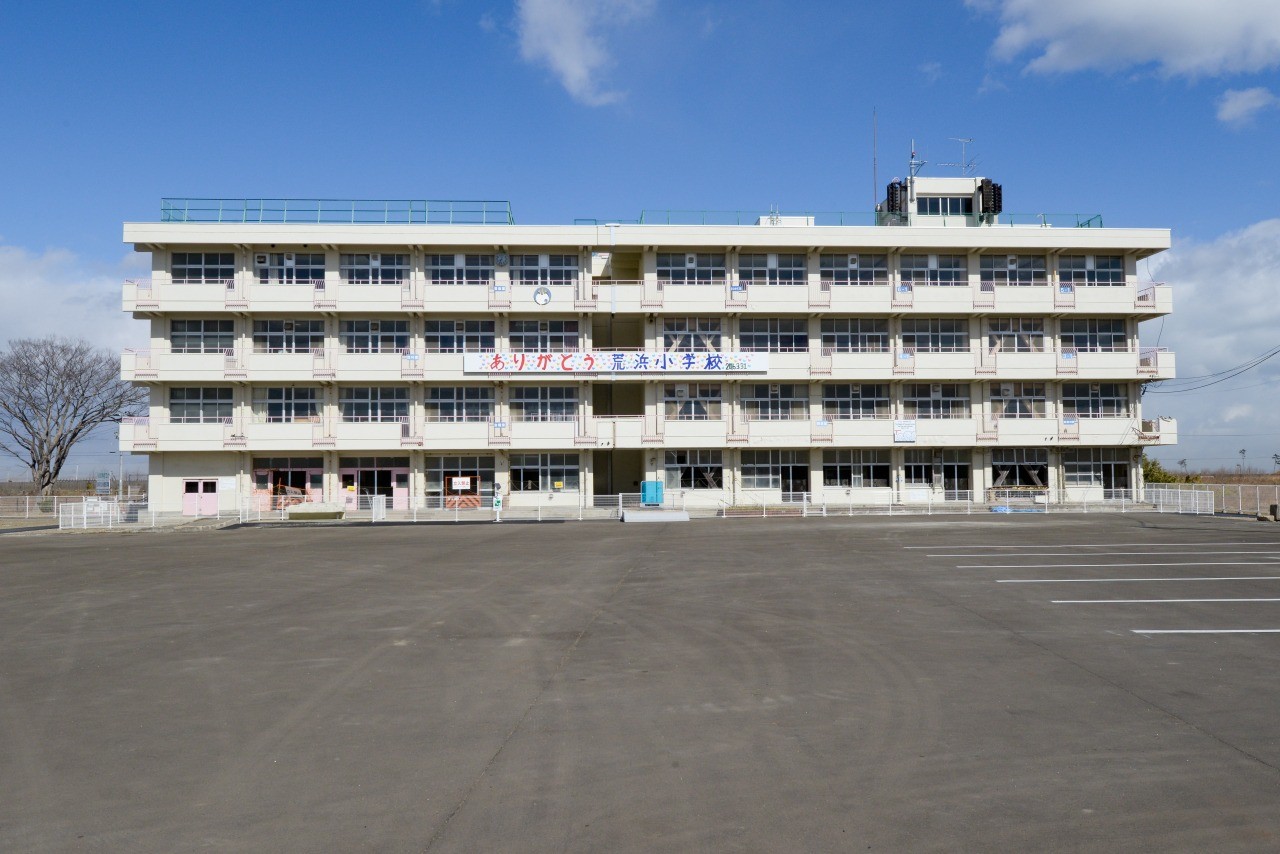Ruins of the Great East Japan Earthquake Sendai Arahama Elementary School
Passing on the lessons of the Great East Japan Earthquake and the memories of the region

Arahama Elementary School, where 320 students, teachers, and residents evacuated after the Great East Japan Earthquake on March 11, 2011, still retains the scars of the tsunami that swept up to the second floor. The school building has been opened to the public as ruins of the disaster in order to pass on the threat and lessons of tsunami to future generations and prevent further loss of life.
Ruins of the Great East Japan Earthquake: Sendai Arahama Elementary School is located in the Arahama area on the Pacific coastline approximately 10 km east of central Sendai. The Teizan Canal flows through the area, where once approximately 800 households and 2,200 people settled. The Arahama Elementary School was established in 1873, located about 700 m inland from the shoreline. The school had 91 students in attendance at the time of the disaster. The earthquake damaged the school building, but directly after the earthquake struck, 320 people, including students, school personnel and residents, evacuated to the rooftop and survived being stranded.
Because of this moving story, the school building was left in its damaged state as far as possible to convey to future generations the destructive threat and power of a tsunami, aided by an exhibition inside the school of photographs taken in the aftermath of the tsunami. Visitors will also learn about the history and culture of the Arahama area and discover remembrances of the elementary school. In the exhibition room on the 4th floor, visitors can watch a 17-minute video, “27 Hours Arahama Elementary School March 11, 2011,” which includes interviews and footage of the fire department helicopter from the time of the earthquake to the rescue of all evacuees 27 hours later.
Within walking distance of the school, visitors will find Kaigan Park Adventure Field, a place to have fun and learn more about the natural disaster, as well as the “Arahama Memorial Bell,” a monument built in memory of the victims of the natural disaster.Languages available: English, Chinese (simplified), Chinese (traditional), Korean, Thai
• There are videos with both Japanese and English subtitles.
• Pamphlets are available in English, Chinese (simplified), Chinese (traditional), Korean, and Thai.
*Check the official website for the latest information.
Ruins of the Great East Japan Earthquake: Sendai Arahama Elementary School is located in the Arahama area on the Pacific coastline approximately 10 km east of central Sendai. The Teizan Canal flows through the area, where once approximately 800 households and 2,200 people settled. The Arahama Elementary School was established in 1873, located about 700 m inland from the shoreline. The school had 91 students in attendance at the time of the disaster. The earthquake damaged the school building, but directly after the earthquake struck, 320 people, including students, school personnel and residents, evacuated to the rooftop and survived being stranded.
Because of this moving story, the school building was left in its damaged state as far as possible to convey to future generations the destructive threat and power of a tsunami, aided by an exhibition inside the school of photographs taken in the aftermath of the tsunami. Visitors will also learn about the history and culture of the Arahama area and discover remembrances of the elementary school. In the exhibition room on the 4th floor, visitors can watch a 17-minute video, “27 Hours Arahama Elementary School March 11, 2011,” which includes interviews and footage of the fire department helicopter from the time of the earthquake to the rescue of all evacuees 27 hours later.
Within walking distance of the school, visitors will find Kaigan Park Adventure Field, a place to have fun and learn more about the natural disaster, as well as the “Arahama Memorial Bell,” a monument built in memory of the victims of the natural disaster.Languages available: English, Chinese (simplified), Chinese (traditional), Korean, Thai
• There are videos with both Japanese and English subtitles.
• Pamphlets are available in English, Chinese (simplified), Chinese (traditional), Korean, and Thai.
*Check the official website for the latest information.
- Address
- 宮城県仙台市若林区荒浜字新堀端32-1
- Telephone Number
- 022-355-8517
- Opening Times
- (Regular) 9:30-16:00
(July, August) 9:30-17:00 - Prices
- Free
- Duration
- Notes